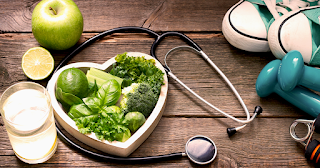PAIN MANAGEMENT
On this page:
- • How Pain Affects The Body
- • Managing Pain Without Medicine
Pain is a very common condition. The occurrence of pain rises as people get older, and women are more likely to experience pain than men.
There are two main types of pain.
- acute pain – a normal response to an injury. It starts suddenly and is usually short-lived
- chronic pain – continues beyond the time expected for healing. It generally lasts for longer than three months.
Pain may be anything from a dull ache to a sharp stab and can range from mild to extreme. You may feel pain in one part of your body or it may be widespread.
Studies suggest that a person’s emotional wellbeing can impact the experience of pain. Understanding the cause and learning effective ways to cope with your pain can improve your quality of life.
Key pain management strategies include:
- pain-relieving medicines
- physical therapies (such as heat or cold packs, massage, hydrotherapy and exercise)
- psychological therapies (such as cognitive behavioural therapy, relaxation techniques and meditation)
- mind and body techniques (such as acupuncture)
- occupational therapy
- community support groups.
Causes of pain
The most common causes of pain in adults include:
- injury
- medical conditions (such as cancer, arthritis and back problems)
- surgery.
The most commonly reported types of pain are headache and back pain (although pain involving the limbs, shoulder and neck is also common).
How pain affects the body
Pain is a complex protective mechanism. It is an essential part of evolution that protects the body from danger and harm.
The body has pain receptors that are attached to two main types of nerves that detect danger. One nerve type relays messages quickly, causing a sharp, sudden pain. The other relays messages slowly, causing a dull, throbbing pain.
Some areas of the body have more pain receptors than others. For example, the skin has lots of receptors so it is easy to tell the exact location and type of pain. There are far fewer receptors in the gut, so it is harder to pinpoint the precise location of a stomach ache.
If pain receptors in the skin are activated by touching something dangerous (for example something hot or sharp), these nerves send alerts to the spinal cord and then to part of the brain called the thalamus.
Sometimes the spinal cord sends an immediate signal back to the muscles to make them contract. This moves the affected body part away from the source of danger or harm.
This is a reflex reaction that prevents further damage occurring. It happens before you feel pain.
Once the ‘alert!’ message reaches the thalamus, it sorts the information the nerves have sent, taking into account your previous experience, beliefs, expectations, culture and social norms. This explains why people have very different responses to pain.
The thalamus then sends the information on to other parts of the brain that are linked to physical response, thought and emotion. This is when you may feel the sensation of pain, think ‘That hurt! What was it?’, and feel annoyed.
The thalamus also contributes to mood and arousal, which helps to explain why your interpretation of pain partly depends on your state of mind.
Managing pain without medicines
Many non-medicine treatments are available to help you manage your pain. A combination of treatments and therapies is often more effective than just one.
Some non-medicine options include:
- heat or cold – use ice packs immediately after an injury to reduce swelling. Heat packs are better for relieving chronic muscle or joint injuries
- physical therapies – such as walking, stretching, strengthening or aerobic exercises may help reduce pain, keep you mobile and improve your mood. You may need to increase your exercise very slowly to avoid over-doing it
- massage – this is better suited to soft tissue injuries and should be avoided if the pain is in the joints. There is some evidence that suggests massage may help manage pain, but it is not recommended as a long-term therapy
- relaxation and stress management techniques – including meditation and yoga
- cognitive behaviour therapy (CBT) – this form of therapy can help you learn to change how you think and, in turn, how you feel and behave about pain. This is a valuable strategy for learning to self-manage chronic pain
- acupuncture – a component of traditional Chinese medicine. Acupuncture involves inserting thin needles into specific points on the skin. It aims to restore balance within the body and encourage it to heal by releasing natural pain-relieving compounds (endorphins). Some people find that acupuncture reduces the severity of their pain and enables them to maintain function. Scientific evidence for the effectiveness of acupuncture in managing pain is inconclusive
- transcutaneous electrical nerve stimulation (TENS) therapy – minute electrical currents pass through the skin via electrodes, prompting a pain-relieving response from the body. There is not enough published evidence to support the use of TENS for the treatment of some chronic pain conditions. However, some people with chronic pain that are unresponsive to other treatments may experience a benefit.
We are alternative healthcare professional that can guide you through the best treatments for you.

Comments
Post a Comment